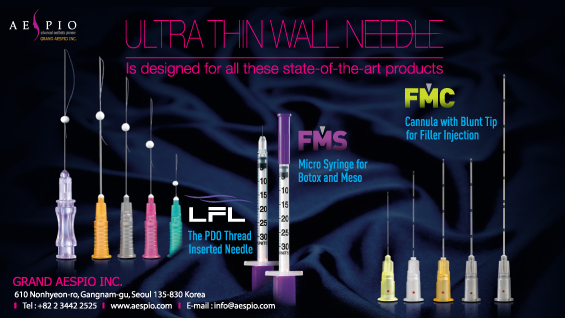* Acceptable secondary publication
* This article was published in the Medical Lasers.
* The authors have received approval from the editors of the Medical Lasers and the D&PS.
2. Efforts for reducing the risk of hypopigmentation
Jeong et al. presented their study New treatment for melasma with the collimated low fluence Q-switched Nd:YAG laser at the 2009 Annual Conference of American Society for Laser Medicine and Surgery.19 This study compared treatment outcome and the risk of complications between laser parameters. The first group was given 3-10 passes at 2.0-2.5J/cm2, and the second group was given 2 passes at 1.6-2.0J/cm2. Both groups received 8 weekly treatments.
In the first group, hypopigmentation occurred in 3 (17.6%) out of 17 patients, whereas it did not occur in the second group. Although statistical data was not given, their results indicated that laser toning-induced hypopigmentation occurred due to aggressive treatment. However, as no other studies have directly assessed the risk of hypopigmentation associated with laser parameters, it would be helpful to review expert opinions as well as other literature reviews on this topic.
First, let us take a look at the study20 and review21, which were published following a slate of reports published in 2008-2010 regarding the risk of hypopigmentation with laser toning. Jeong et al20 aimed to compare the treatment outcome between different orders of treatment where a combination of laser toning and triple combination cream (4% hydroquinone, 0.05% tretinoin, 0.01% fluocinolone acetonide) was used.
[Advertisement] ULTRA THIN WALL NEEDLE – Manufacturer: AESPIO(www.aespio.com)
The authors performed 8 weekly laser toning treatments using 2 passes at a spot size 7mm, low (1.6-2.0J/cm2) fluences and achieved treatment success without any complication over a long-term follow-up. This supports our notion that hypopigmentation can be mostly prevented by using a low fluence. In 2011, Bevec published the review21 citing this study. The review emphasized the superior efficacy and safety of low-fluence laser toning.
The authors concluded, “The result of various studies indicate that even very low fluences (1.6J/cm2) can be effective.”21 They also suggested that fluences around 3.0J/cm2 can often cause hypopigmentation and a better alternative would be using a “very low fluence (around 1.6J/cm2)”.21 They added that theoretically, treating melasma with an “extremely low fluence (1J/cm2)” may still be successful.21
-To be continued
References
19. Jeong SY, Shin JB, Yeo UC, Kim WS, Kim IH, Kim JH. New treatment for melasma with the collimated low fluence Q-switched Nd:YAG laser. Lasers Surg Med 2009;41(supplement21):97.
20. Jeong SY, Shin JB, Yeo UC, Kim WS, Kim IH. Low-fluence Q-switched neodymium-doped yttrium aluminum garnet laser for melasma with pre- or post-treatment triple combination cream. Dermatol Surg 2010;36:909-18.
21. Bevec T. Treating melasma with sub-thermolytic Q-switched Nd:YAG. J Laser Health Academy 2011;1:53-5.






















